The list of companies aiming to get into running efficiency products seems to grow by the week, and this week I’m giving you a look at FeetMe. At its core, FeetMe is a connected insole that broadcasts and records everything from pace to cadence, and vertical oscillation to running power. Except that unlike other devices on the market, they are going a bit deeper in the metrics offered, and is also capturing those measures using force sensors – versus just accelerometers. The goal for FeetMe, like most other companies, is simply to ‘enhance performance’ and ‘avoid injuries’. But their technologies seem to be more advanced than most others in the market – and they’ve got a fairly grounded medical device history to support some of their accuracy claims.
As many know though, I’m a bit skeptical when it comes to some of the running efficiency focused products out there today. Not so much because I have questions on the underlying data (though I still do), but because I question how much study has been given to the guidance some of these products make. Still, I’m happy to evaluate them individually based on their merits.
Being a Parisian based company, I had the chance to take a pair of the insoles out for some quick demo runs to understand how they work. Afterwards, I poked around the app to see how the data looked. Let’s dive into it.
An Overview:
The FeetMe system is a pair of insoles covered in pressure sensors that have a surprising amount of tech packed into them. Unlike other insole systems I’ve seen/tried, the FeetMe doesn’t have additional pods hanging off the side – everything is instead internal. So with that in mind, it’s somewhat impressive that it contains all of this inside each insole:
– Concurrent ANT+ & Bluetooth Smart connectivity
– Battery and data storage for up to 25 hours
– Wireless charging (yah!)
– 25 pressure sensors covering the entirety of the foot
– 9 axis IMU (Inertia Measurement Unit): Accelerometer, gyroscope, magnetometer
– Waterproof (exact IPX rating not yet finalized)
The entire package weighs 80g per insole, which didn’t feel too much heavier than my other insoles.
Their main selling point though is really their sensor design. Some other products will have 2-3 sensors in the insole, but this has 25 – covering virtually the entire insole and thus foot. It’s that additional sensor coverage that’s allowing them to dive more deeply into running power, and even cover areas such as horizontal versus vertical power. Of course, when you look at the insole from the outside – it looks just like any other insole.
On these prototype insoles there are two connector ports that you can see up above, enabling diagnostic and related beta functions.
What’s interesting here is that the company isn’t new to the insole space. In fact, their first product was focused on the medical side of the equation (called FeetMe Diagnosis). That product is used for post-surgery assessment and patient analysis. So this is really them porting over the technology into a new application (hence the slight product name shift from FeetMe Diagnosis to FeetMe Sport).
When it comes to data, today that’s transmitted via Bluetooth Smart to the mobile app. Or it was when I ran with it last month. Since then they’ve made progress and the data is actually recorded within the pods themselves and then downloaded after the fact. But you can run with the app in real-time too. Your choice.
As some of you probably noticed, the company is also transmitting data over ANT+. The plan there is twofold. First, it’s to allow your ANT+ enabled device (i.e. a Garmin watch) to pick up footpod data like cadence and pace. Secondly, it’s to enable transmission to a Garmin Connect IQ app that they’re working on – which will capture more of the running efficiency metrics than the standard footpod data.
Though, it won’t feed into Garmin’s Running Dynamics metrics, because Garmin still locks that down to just themselves. This is yet another example of a company trying to do running efficiency and wanting to enable the exact same metrics (Vertical Oscillation/Ground Contact Time) to show up natively on Garmin devices. Others stuck in Running Dynamics purgatory include Wahoo Fitness with their TICKR HR straps as well as Stryd with their running power meter.
A Run and The Data:
With the basics understood it was time to head out for a brief run to check things out. The focus wasn’t so much duration for my run, but just understanding the data it collects and how it all works. First up was sticking the insoles in my shoes. I simply removed my existing insoles and plopped these inside. That is a notable difference to something like Kinematix, which slides under your existing insoles (allowing you to keep them). On the flip side, Kinematix has a large pod hanging off the side, and this has none of that.
Next, the insoles were paired to their smartphone app. For my test, I was just using a single insole (left) versus a dual set. Though in the last few weeks they’ve implemented the dual functionality. From there I went off for some short 3-4 minute runs, each time varying the pace a bit. Some I’d start off easy and then change to a sprint and so on.
In this particular beta, I had to carry the phone with me (I could have stashed it on a Spibelt or similar), though the next beta and subsequent final versions have storage so that you don’t have to take a phone with you.
As noted, I also did some sprints back and forth to see how things worked, though unfortunately for some reason the hardware kept dropping the signal when I would kick up the pace (below photo from them, of that). They noted they’ve never seen those dropouts before – even in having done a bunch of track work with higher-end track athletes. Said differently: My running power is just off the charts.
I’m not worried about it at this stage, given it’s beta. That’s what beta is for.
After wrapping up, we headed indoors to check out the data. To begin, we’ve got the menu on the left side for getting around the major parts of the app, while on the right side we have my most recent test run.
For each run, it’ll get you a slew of data stats from that run. Each of those stats is tied to a specific ‘skill’ that they want you to work on. And in turn, each of those skills has different exercises that you can do to improve it. This is mostly in line with other offerings out in the market. Where both FeetMe and many others have a gap, is backing up the reasoning for each of these skills with specific 3rd party studies that support why they are doing what they are doing.
When I brought this up to FeetMe, they agreed it’d be good to put links to their supporting logic within the app.
The app will plot your specific skill level, over time, against a broad range of abilities.
Next, we’ve got basics from my specific run. The first few pages are top-level stats like duration, distance, and pace.
However, as we dig into them, we get more detailed stats – such as a breakout of power. This is done for both vertical power as well as horizontal power. Further, it’s showing it as W/KG, versus just straight watts. Though I argued that for most people – having another page to show watts as well makes it a bit easier to comprehend.
Note at the end of these charts you see that spikes – that’s where I started a sprint (and then broke the unit).
In line with other companies (such as Garmin’s Running Dynamics), you’ve got efficiency metrics like Ground Contact Time, Vertical Oscillation, and of course Cadence. But they go further into areas like Impact Force and Pronation/Supination.
Just to recap a bit on all of the data metrics that the unit can record, here’s a handy listing by the categories they define them in:
Running: Distance, Time, Calories, Pace
Power: Propulsion Force, Horizontal Power, Cadence, Ground Contact Time
Technique: Stride Length, Step Phases (Absorption, Propulsion, Swing), Strike Zone
Efficiency: Vertical Power, Vertical Oscillation
Impact: Pronation/Supination, Loading Rate, Impact Force
And to top that off, I had them create a screenshot of every screen in the app (using my run), just to show you virtually all the metrics (albeit on a short run). It’s probably easiest to click on one of the images, and then use the left/right arrows to look at the remainder.
Again remember that you won’t have to use the app during the run in the final version. Instead, the insoles will record the data for later download.
Finally, they plan to sync with major platforms including Garmin, Strava, RunKeeper, and Endomondo. I suspect the sync with Garmin, for example, will mimic what Stryd does, where it imports in your GPS activity file to merge the data from their power app. But those details are still being finalized.
Going Forward:
As I noted earlier on, the running efficiency metrics field is crowded. And it’s largely crowded by startups. Off the top of my head we’ve got RunScribe, Lumo, Kinematix, Wahoo Fitness, SHFT, Evalu Run, and FeetMe. Plus others that are measuring running efficiency at other points, like Garmin with their Running Dynamics. And then there are more companies out there that are promoting product ideas but not yet to the point of having products in hand. And lastly, companies I’ve simply forgotten about.
Some of these companies are already in the segment and have been for a while (Stryd/RunScribe), while others have launched but are still growing to establish an active user base (Kinematix/Lumo). The challenge that all of these companies have though is longevity – and in particular, becoming a ‘needed’ part of your daily workout.
Like any other device you buy – if it’s just geekery for geekness sake, it’s not likely to be something you use long term. For me, Garmin’s Running Dynamics fall into that category. Years later, there’s really nothing that’s been done and validated from a science training standpoint to indicate how to use the data for training or racing. Thus, I ignore it. Companies doing running power will need to find similar validation as well, though their job is a bit easier on the running power theory part. The trickier part for running power companies is accuracy of data.
And that’s where FeetMe could be in a better position than others. Since FeetMe is actually measuring your running propulsion force, it’s actually a true running power meter. In theory, it should be able to show the difference between running into a headwind vs with a tailwind. Something that accelerometer based solutions like Stryd are unable to do today.
Further, with that sensor platform – it gives FeetMe more flexibility in terms of data measurements. Not only that, but they’ve got effectively the same IMU (accelerometer/gyroscope/magnetometer) system as most other footpods. So they kinda double-down in that region.
I see FeetMe’s biggest challenge though is data compatibility. Most serious runners aren’t going to want to use FeetMe’s app to do training log analysis, but rather will turn to companies like Training Peaks and Sport Tracks. Yet those platforms are only in the beginnings of supporting running power, and in many ways – that is in turn dependent on watch companies like Garmin, Suunto and Polar working to make it easier to consume running power data. To date, only Suunto has done so. Garmin supports it via Connect IQ – but then apps like TrainingPeaks don’t bother to support that data. Thus…sigh.
But all that’s a discussion for a different post on a different day.
In the meantime, you can pre-order the FeetMe units on their site, and they plan to start delivering later in June. The official retail price is 249EUR, though on their site they’ve got a pre-order 100EUR off deal – bringing it down to 149EUR (quite reasonable). And again, yes, that’s for two insoles. You’ll just need to pick your shoe size.
Once they get closer to release I’ll likely give them another whirl. I’d be particularly interested to see how they compare to Stryd from a running power standpoint, as well as the other metrics they overlap in.
Thanks for reading!
FOUND THIS POST USEFUL? SUPPORT THE SITE!
Hopefully, you found this post useful. The website is really a labor of love, so please consider becoming a DC RAINMAKER Supporter. This gets you an ad-free experience, and access to our (mostly) bi-monthly behind-the-scenes video series of “Shed Talkin’”.
Support DCRainMaker - Shop on Amazon
Otherwise, perhaps consider using the below link if shopping on Amazon. As an Amazon Associate, I earn from qualifying purchases. It doesn’t cost you anything extra, but your purchases help support this website a lot. It could simply be buying toilet paper, or this pizza oven we use and love.

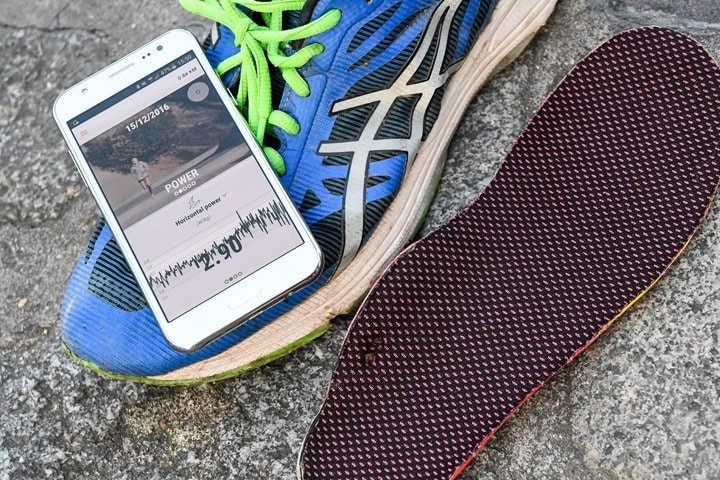
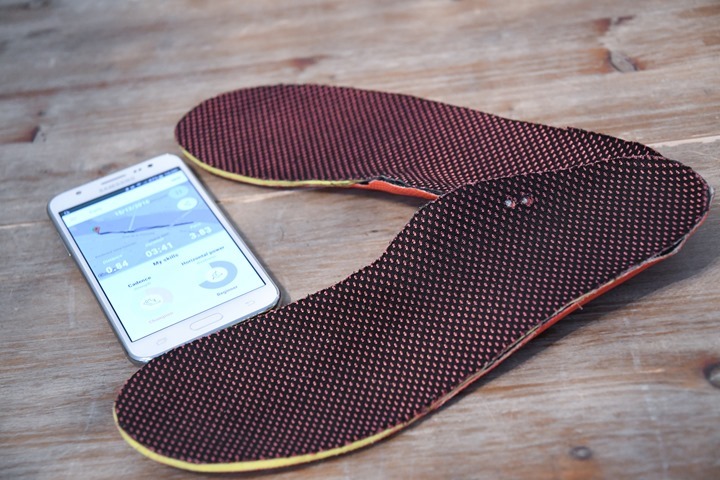
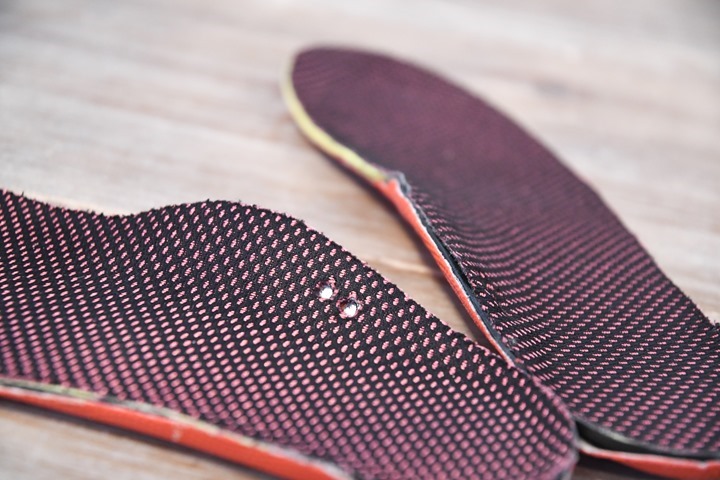
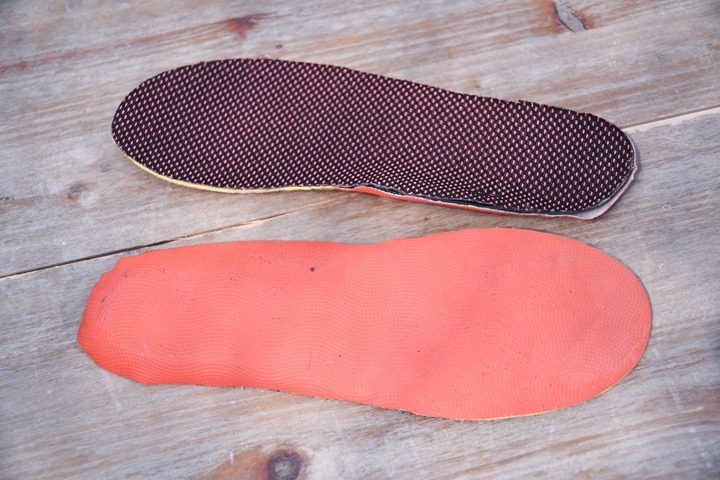
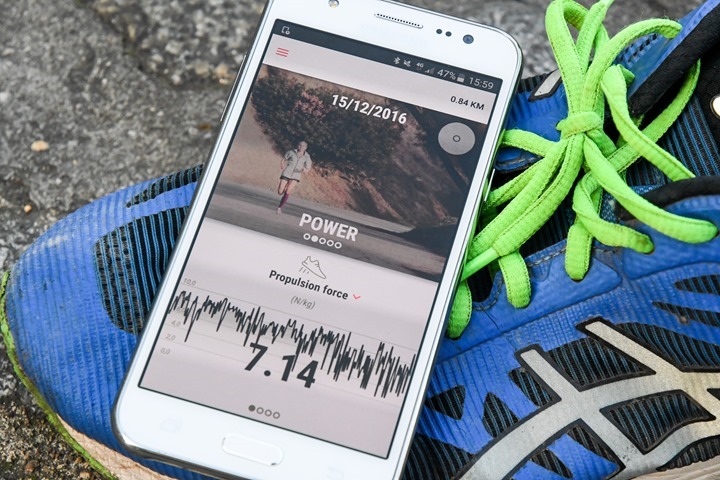

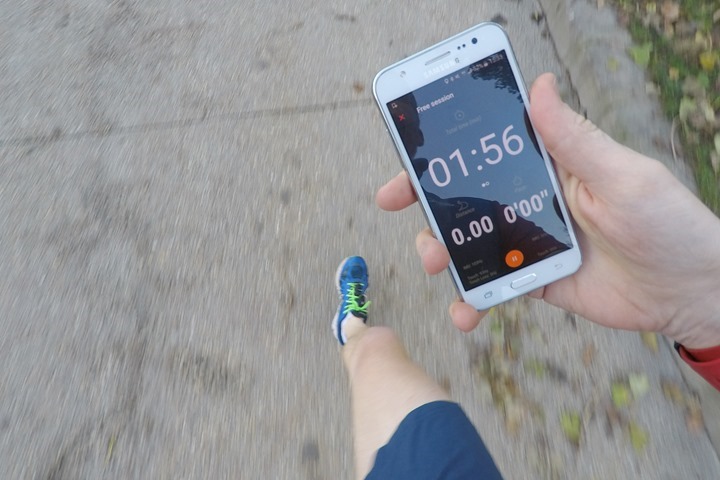
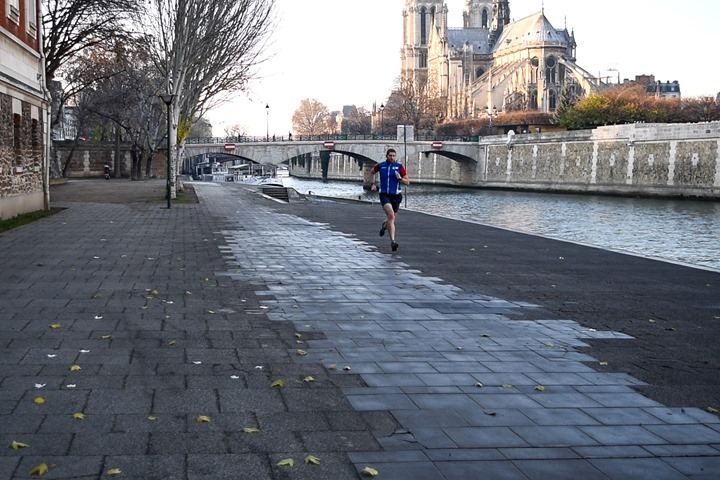
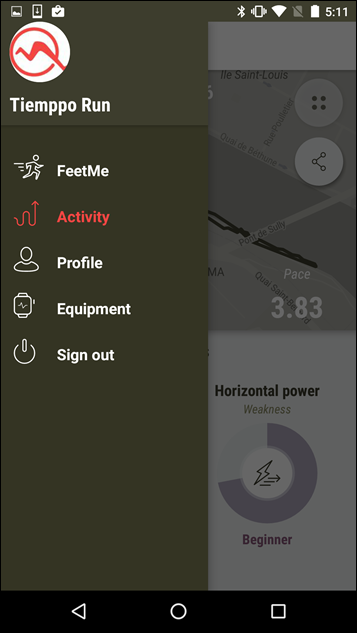




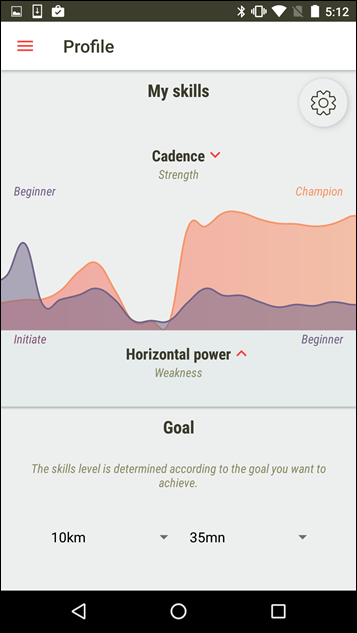
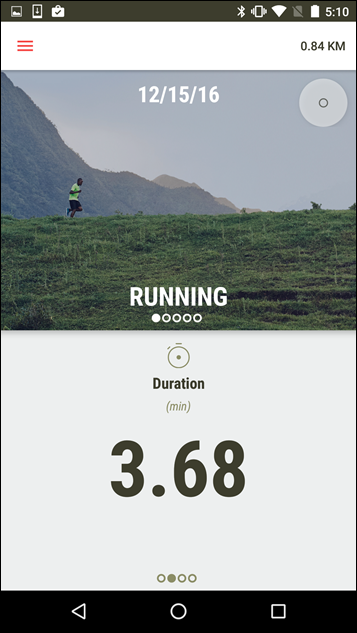
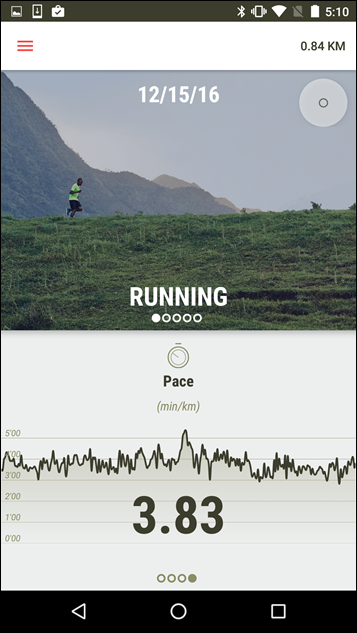
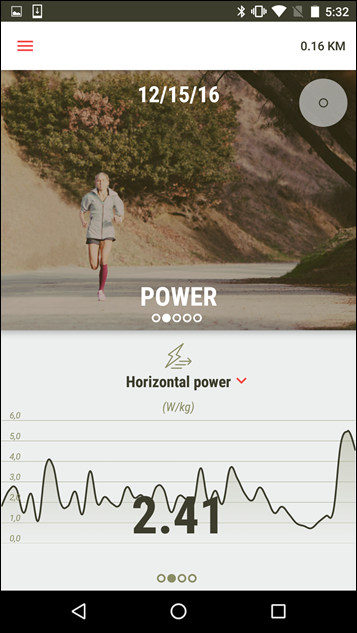
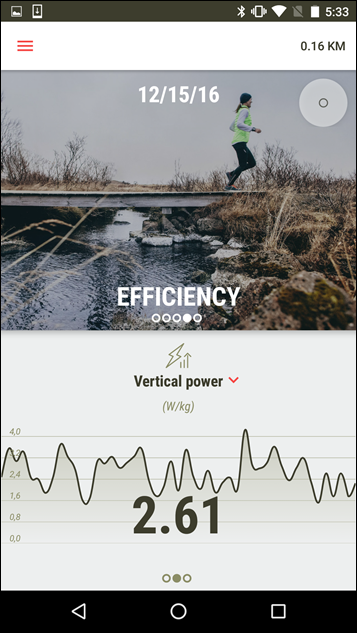
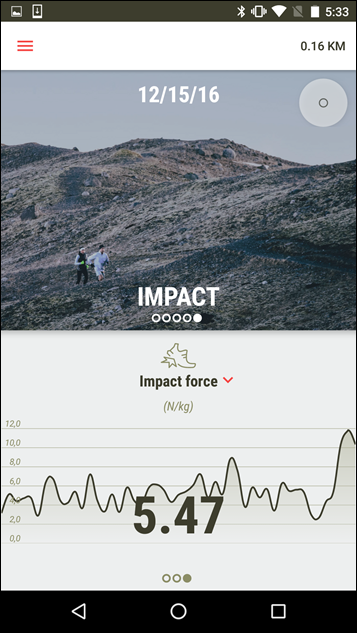
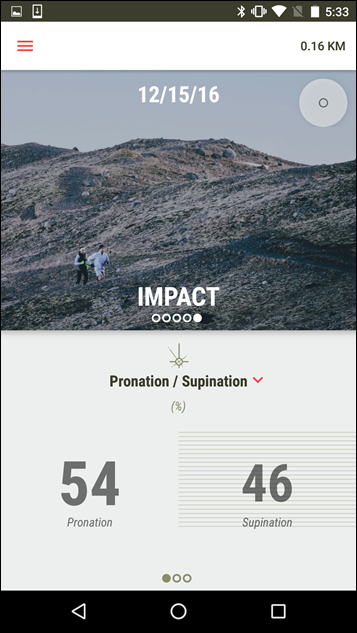
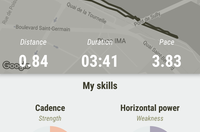
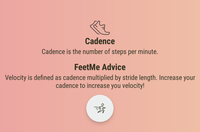
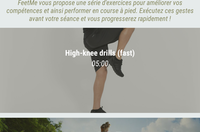
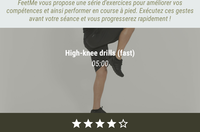
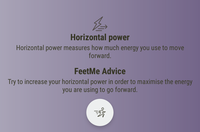
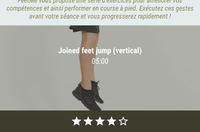
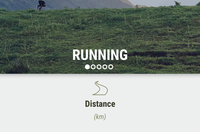


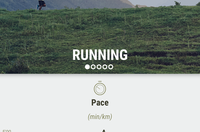
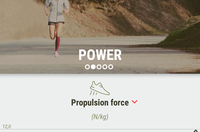
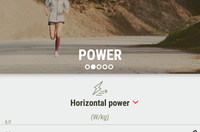
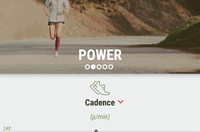
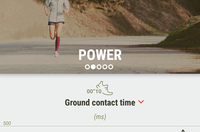
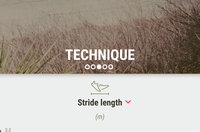
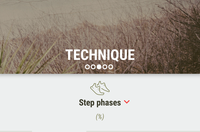
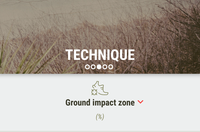
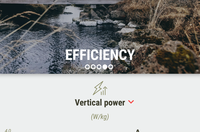
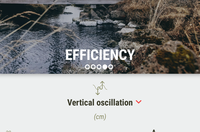




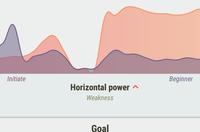
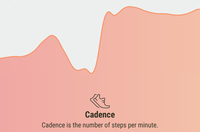
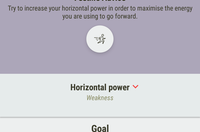
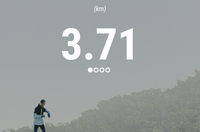

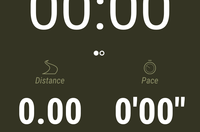
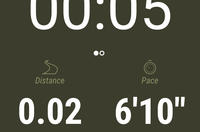
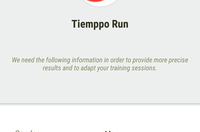

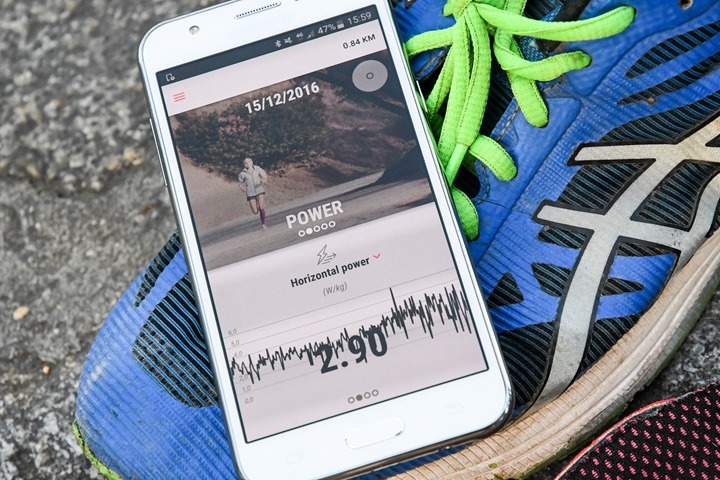
















I remember you mentioning the milestone pod in another article.
It is, I think, by far the cheapest gadget (approx 30 Euros) for running dynamics-like data.
Any change of you doing a review of the milestone?
Yup, working on it. One sitting right next to me in fact.
But that’s kinda a bit different in its goals. Sure it does some metrics – but nowhere near as much as this.
Of course – obviously, at $29, it’s an awesome option for many other things. And for most people that want just a simple footpod – it’s perfect.
How about $14 for the next few days? Having bought a pod last month, just received a “Friends & Family Discount” email from them:
“February 12th – 15th
Special MilestonePod price: $14.00
Shop at MilestonePod.com
Use code PodXOXO14”
Direct Force measurement + accelerometer/gyroscope: Isn’t that enough to make it a cycling power meter in the right hands?
Of course it needs a totally different software approach but the hardware should be sufficient?
If this works it would be an amazing dual use power meter.
Hello, Alexis from FeetMe Sport.
This is something we are working on and we hope to have results during this year.
Pressing the pedal would no problem, but measuring the power the other leg adds by pulling the pedal couldn’t be measured. I don’t know the exact numbers but the better you use both legs the larger the difference would be.
Maybe they can add a forefoot sleeve for measuring the upward pull.
Do the insoles need to be calibrated to the actual shoes for power data? You’re not just pushing off the ground through the insole, you’re also pushing through the midsole–I can imagine, e.g., a pair of Hoka Ones absorbing more power than minimalist shoes.
You’re generating the same amount of power either way but less of it is being transferred to the ground in a big shoe.
This makes that Stryd I just bought look pretty overpriced.
I don’t think the shoes matter. The power is measured with reference to the bottom of your foot not the shoe. Its a bit like a pedal mounted power meter versus a hub mounted power meter. The pedal would show a higher power than the hub. The power you provide is still the same, just measured with and without drive-train losses.
Hello,
Alexis here from FeetMe Sport. The shoe should not matter. You are measuring the force and movement between your feet and the shoe. This is independent from the shoe. But the shoe might change the way you run and then your power output.
Indeed the power (force x distance / time) would remain the same assuming data processing/smoothing is accurate enough. Interestingly, I’m pretty sure that the shoes would affect the recorded impulse during impact. That’s sort of the point of big cushy shoes. Would be interesting to see how your shoes wear out over time and how much more stress your body takes as that happens. Nice way of managing gear and avoiding injury. And certainly addresses the shortfalls I expected with my Stryd (it can’t account for wind and hills). But I entered into it with a realistic point of view. This is a new space – it’s early development and improvements will take time. I’m willing to continue to support demand (growth) for tech in this space and impressed that you are going after direct force so soon. Keep up the good work!
Hello,
Alexis from FeetMe.
Yes we hope to add more features on injury prevention side. Feel free to read our blog for this.
link to feetmesportblog.wordpress.com
What’s the life on these things? Are they going to wear out like a pair of shoes might, or are they expected to last as long as a foot pod (i.e., forever)?
My experience with footpod is 5,000 km, give or take. Not forever by any means. I would be disappointed if these insoles didn’t physically last until they were functionally obsolete, which is probably going to be about the same distance for most runners, timewise a couple of years to match the receiver head product cycles (phone or watch). But yeah, durability is a big concern for me too, especially since Ray says he “broke” the unit. What broke, btw? Sensor, transmitter, storage medium? What’s the warranty?
I thought a foot pod uses solid state sensors (no moving parts). Besides the battery, how can it wear out or die?
In the last few months I’ve noticed that my Stryd power data is showing up in Training Peaks directly from Garmin when I use the Stryd data field. This is without sending it through the Stryd website anymore. So that starts to open up the use of power without having to go through a lot of extra hoops. None of the other metrics Stryd supports like leg spring stiffness are showing up at TP but power is. And TP now supports a separate running power FTP separate from your bike FTP. So things are looking up there.
Gotta agree with the others, this makes Stryd look overpriced and outmoded.
It’s almost as if somebody introduced a Powerpod to the market, and then another company came in with a direct-force-power-meter for cheaper.
Of course, the pre-order deal is the only thing making it cheaper, do you happen to know how long that lasts?
Hello,
Alexis from FeetMe.
We have a limited number of insoles for our cherished beta users; The price will then go back to normal.
Had a quick look and they only seem to support up to a US size 12 🙁
Hello,
Alexis from FeetMe.
We have a limited number of insoles for our cherished beta users; The price will then go back to normal.
I’ve been looking at the Stryd, but this looks even better. Only problem, they don’t make my size. I’m a 13 and they stop at 12.
Hello,
Alexis from FeetMe.
We hope to be able to provide more sizes in future with bigger volumes.
Today is 19th april 2019 and nothing for the big sizes. And always pre-order… wtf ?
I asked questions on your website and it’s difficult to have the informations. “Usually responds within 2 hours”… it’s a joke ! I’m waiting since near one month.
I can be patient but my patience have limits. Your product seems wonderful but only if it exists !!!
I think it’s fair to say that at this point the product/company is dead (or has re-focused into other industries). One only need to look at social media, which stopped about two years ago – to see that.
About the dropouts: you mention you were were holding the phone. Is it connected via Bluetooth? Then I would believe putting the phone in a belt might stop body interference issues, same as I had with the Scosche R+ on the other arm than my GPS watch was.
Hello,
Alexis from FeetMe.
We already have a product in medical field and we don’t have this kind of issues in testing. The connectivity will be both Bluetooth and ANT+ for watches.
FeedMe Feetme! Well I have the same question about durability. But at this price point, being a data geek, it´s really tempting. I will keep an eye on this.
Hello,
Alexis from FeetMe.
Feel free to ask if any question.
The only concern I have is wear after heavy use would they need to be replaced or should they last a lifetime? Love the idea and the stats looks great.
I’ll defer to FeetMe on what they expect for lifetime use longevity.
That said, I know for insoles I’ve had made for my shoes in the past – they’ve lasted many years (in my running shoes – around 5-7 years). They finally died when I accidentally left them in a rental car at a trainer station in the French Alps a couple years ago. RIP 🙁
Agreed. For any serious runner (which is obviously the target market), how many miles can these last? I’ve run holes in the off-the-shelf insoles after ~300-350 miles over the course of a few months. They can’t expect customers to drop cash for a new pair that often.
The insole material itself is not the problem – it’s the longevity of the pressure sensors that is the question. And a very important question.
Feetme is quick to answer all questions, except the longevity questions.
That doesn’t sound good and their web site resembles bsx web site…
Hello,
Alexis from FeetMe.
The longevity for this product is 2000km based on the tests we have made so far for the pressure sensors. We expect a yearly life time for the product. This depends on miles runs. The main point after so many miles will be the visual aspect of the insole. We expect the insole to last 4 pair of shoes.
Sorry for delay @panos it was night in France, FeetMe sleeps sometimes 🙂
Actually measuring the power as opposed to reverse engineering it based on acceleration sounds like a far better approach.
I wonder how they would work together with normal insoles. I wear custom insoles to address an over pronation problem. Presumably there won’t be room in the shoes for two sets of insoles.
Hello,
Alexis from FeetMe Sport.
You could potentially customized those insoles as they are standard insoles;
I really hope these are accurate because I love the idea of a direct force power meter for running. I tried the RPM2 and it just didn’t work. Power numbers werent even in the right ballpark. And the amount that they were off by would swing wildly. Eventually got my money back.
Hello, we made already some validation test in a biomechanics lab. We reiterate those tests on last iteration of hardware before shipping the beta testers.
Looks very interesting to me as someone who subscribes to the mini,malist approach ti running. Would love to analyze my footstrike with this.
Hello,
Alexis from FeetMe.
We would love to have you among our first beta users.
Feel free to ask any questions.
Ironically, the pronation/supination data graphic shows trail runners. It would seem that trail running would mess with that aspect of the data quite a bit. But is it safe to assume that FeetMe envisions these insoles to yield useful data for trail running as well as road running? Similarly (if less extreme in terms of the differences), will impact data be able to account for different surface hardness (i.e., asphalt vs. concrete), and/or does that not matter for these purposes?
Hello,
Alexis from FeetMe.
It always tough to present a product in all the use cases. Trail and road running are both of target for the product. The device will measure propulsion force and impact forces that can vary depending on surface hardness.
Look pretty cool. I am a huge data nerd so this type of stuff – even if ultimately useless – is still something I love looking at after runs.
One issue though…. am I the only one who finds it completely unacceptable to display pace/duration with decimals? Showing that you ran for 3.68 mins at a pace of 3.83 min/km just looks wrong!
Hello,
Alexis from FeetMe.
Thank you for the feedback, we’ll integrate those in next release. The test was made on one of the first prototypes. You can find new visual of next version on our Facebook page for example.
Hi Alexis
Thanks for the response, great to hear!
I like the FeetMe but I cannon use the insoles with my fivefingers
Hello,
Alexis from FeetMe Sport.
Unfortunately, this is not usable for five fingers at the moment as there are sensors on all the surface. But if we are successful enough, we will be able to make a model for five fingers.
Are the insoles custom? Can they be made custom?
Hello,
Alexis from FeetMe.
The insoles are not custom. But you can make them custom on your own by asking your physician.
Thanks Alexis – much appreciated.
Are you saying that the FeetMe insoles are “moldable”?
I’ve worn custom insoles for ~20 years and would have a hard time giving them up.
Many thanks
Hello,
Alexis from FeetMe.
There are not moldable but you can add corrective elements and molded elements on top. It can be considered as a bas for the insole.
How do you handle different dimensions with shoes? I rotate between a few different pairs and the insides are different; say a racing flat compared to a heavier trainer. I can’t imagine the user is supposed to trim the insole?
I asked this today, mostly b/c I’m likely between sizes. The response from FeetMe was that the insoles *would* be trimmable. Probably limited, just to get the tweener sizes…
Hello,
Alexis from FeetMe.
Yes there are different sizes but the insoles will be trimmable for the tweeter sizes.
Looks neat. I jumped on the Stryd band wagon and have been using for over 6 weeks. Jury is still out. Stryd Power web site just came out with Running Stress Score, kinda like Strava’s Suffer Score.
I now run about 6 days a week- about 1-2 hours a run.Now I spend several hours looking at all the data:)
We have taken an almost innate method of human locomotion and possibly giving us TMI.
I marvel when I started running seriously just over 40 years ago with nothing but a hand held stop watch, the size of an alarm clock, that somehow I got to running under 18 minute 5K’s, without any data measurements.
I currently suffer from analysis paralysis. It fascinates me that with all the tech advances in shoes,HR, GPS,etc.,etc that the average neighborhood runner seems to have slowed down. 5-6 hour marathons. Back in the 70’s some had cut off times at 4 hours.
Hey, thanks Ray. I appreciate what you do and letting an old fart like me share some thoughts. Nick
Ordered! I’m such a data geek.
Okay, this is the sort of product I’ve been saying is needed (unlike pseudo-measurements from Stryd).
That being said, how do they measure ‘power’? Are they doing it in the standard sense, i.e. horizontal power = force x velocity?
Under constant speed, net horizontal power is 0. Are they only providing the propulsion power?
Obviously, raw power values for running on non-intuitive. Having higher values for a given exertion is not necessarily better. Are they converting these into another metric of power?
Hello,
Alexis from FeetMe.
Horizontal power= horizontal force*horizontal velocity of the center of gravity
Vertical power= vertical force*vertical velocity of the center of gravity
For those two measurement, we provide the maximum value during each step.
Obviously under constant the value of power is 0, but the maximum value is not and depends on the running technique.
We do not convert the value and we provide raw calculation.
If any other question, feel free to ask.
Interesting to pick the maximum value. I wonder how this biofeedback alter’s the runner’s mechanics (not that I have a better metric).
Since your pressure sensors are presumably measuring vertical force (relative to shoe reference frame), what assumptions do you make to estimate horizontal force? Assume a Coulomb friction relationship?
Hello,
Alexis from FeetMe.
@Ze yes we measure vertical force and ankle power. This is part of our IP I can not display more than this. Good idea for the Coulomb friction relationship but that’s not what we are using because it would not give an exact value.
My interest in this is irrational, but strong. I have Garmin Running Dynamics. I look at that data after every run. It’s pretty meaningless. So know I want *more* running data that I’m not sure how I’ll use. And as much as I like the FeetMe device (especially at the beta price), it’s pretty unknown. Others are shipping devices, so less risky (at least less immediate risk). Maybe I will distract myself in the Tour of Sufferlandria for the next 9 days. Then, we’ll see…
Ugh, ‘now’, not ‘know’…
Hello,
Alexis from FeetMe.
Feel free to read more on our blog if needed to understand the value of the product.
https://feetmesportblog.wordpress.com
Ray,
I run with orthotic inserts in my shoes, I’m assuming that the need for my inserts would render the viability of an item like this void for me?
Correct.
Hello,
Alexis from FeetMe.
Yes you would not be able to use both. You would need to ask your clinician if he can customize those so that you have sensors within your custom orthotics.
This looks quite impressive, but it’s the sort of thing that I’d like to try in a shop before I lay down the money. I’ve bought insoles online before, and found the sizing to be a bit hit and miss!
A few questions:
1) Do you have any idea on the life expectancy of this product? Do they guarantee X many mile before it needs replacing?
2) Do they do special insoles? I underpronate (supinate) when I run, so use specific insoles to correct this. If I’m replacing my insoles with this, I’d need similar.
3) I’m assuming that as they broadcast Cadence via Bluetooth, that they’d work on a treadmill with Zwift? This would be useful in the gym! Turn up with just my phone and trainers, and do a quick 20 min Zwift warm up!
4) Not specific to this product, but does any company with this sort of tech (and bike head units) use a Digital Spirit Level/Inclinometer for measuring when running up hill? It would probably be better for more accurately recording gradients on a bike head unit along with the barometric sensor, but I guess it could be used with running as well?
If it was zero’d to be parallel with the shoe at 0 degrees before each run, and recorded the gradient at the point of impact, it may be useful? Not sure if that would work, but definitely for bike computers!
Hello,
Alexis from FeetMe.
1) See up
“The longevity for this product is 2000km based on the tests we have made so far for the pressure sensors. We expect a yearly life time for the product. This depends on miles runs. The main point after so many miles will be the visual aspect of the insole. We expect the insole to last 4 pair of shoes.”
2)
We start with generic insoles, but you can customize them with your clinician as we have wireless charging
3)
Yes, it is not mentioned on the website but it will work with Zwift in near future- very nice platform by the way-
4)
The question is not vey clear to me, can you specify?
I hope this helps.
Silly Question, But how come someone hasn’t written a simple Connect IQ app that basically does the running efficiency metrics? I mean it wouldn’t be as advanced as something that FeetMe might put out. But I could strap my 920 on my ankle and calculate watts etc from the accelerometers? The only show-stopper I can think of is the maths required. I’m a developer but have never fooled around with the IQ SDK.
Anyone wanna try?
Mostly because each company does it differently.
Wahoo does it one way, Stryd another, Garmin another, FeetMe another, and so on.
That said – Stryd has done precisely that. They’ve got a Connect IQ Data Field (which is slightly more ideal than an app itself), which in turn puts the data on Garmin Connect. Nifty, and works well.
Stryd is cool. But free would be nicer. 🙂
But I guess if all the different companies have calculated running efficiency differently then there is probably research behind them which the average connect developer would not have access to.
Hello,
Alexis from FeetMe.
Connect IQ Data Field is a very nice way to make integration seamless. We’ll develop the same tool in the product.
Having ground reaction forces is needed to have accurate measurement of power outputting. That’s why we had to integrate force sensors within the insole itself and not only accelerometers that you would find in a pod or a watch. I hope this helps.
Accuracy testing will be interesting… imagine Ray trying to wear 3 sets of shoes at one time!
Ray, are we at the point where a comparison chart for running power devices might be useful. You list in this post a few products and I have a tab open for each – but it would be great to have the relevant comparison metrics side-by-side. Or maybe even a summary post (maybe not *quite* a buyer’s guide) that describes each, strengths and weaknesses, who it is most/least valuable for, future outlook, etc. I really am interested in the FeetMe device, but I suppose I’m thinking about how it compares with others. For example, the ‘pod’ based devices never wear out, but presumably the ‘insole’ based devices do – I guess I’d like to think about that more. And what is the value proposition for each over Garmin Running Dynamics? Some seem to provide a little more info and others a lot more. Pretty confusing to navigate without expert guidance. Hint, hint.
Since the company rep is answering here …
Are the insoles cut-to-fit? If not, how will they fit in wide shoes or shoes with a foot-shaped toe box?
Yeah, my question as well. If they fit into altras I’m in but that seems unlikely from the shape in the pics.
Hello,
Alexis from FeetMe.
Yes the insole are trimmable to perfectly adjust to your shoes if shape is specific. We have made tests with a large amount of shoes to make sure it fits.
Thanks, but have you specifically tested any Altra models with their foot shaped toe box? The toe box is quite a lot wider than most shoes. If you want to email me a PDF template of the insole in the largest size I’d be happy to compare it to my insoles. Here’s a photo of a size 46 Altra insole…almost 11 cm across the widest part.
Hello,
Alexis from FeetMe
Can you send me your email via the what on our website? http://www.feetmesport.com
Okay, this product looks awesome – particularly the power measurement. But it looks like it’s still a pseudo measurement like Stryd. How can you know the horizontal force I put on the insole? You can only measure the vertical force! So if you just use accelerometers for the horizontal force it’s the same as Stryd. Which means it won’t be able to determine the effect of a head wind and a tale wind – which is one of the major advantages of the power measurements!
Hello,
Alexis from FeetMe
Thanks Steve for your very relevant remark.
We measure ankle power thanks to force and motion measurements from our sensors embedded in the insole (both force and 9 axis motion sensors) . We hence have a real measurement and we don’t just use accelerometers as some of our competitors. Ankle power is closely linked to horizontal power from literature review and tests made internally. We have access to real measurement of horizontal power which is unique today on market. Head wind and tail wind have then a direct effect on horizontal power.
Dc,
You should take a look at milestonepod.com. For 30$ it gives almost all these stats.
Nicholas
Hello,
Alexis from FeetMe.
Thanks for the mention @Nicholas of this device.
I take the chance you mention it to clarify for all readers the differences between those two families of products so that there is no misunderstanding.
FeetMe sport uses absolute validated power metrics. It’s not calculated with a model validated only in certain condition. We measure Power= force* velocity. Force measurement is needed to have absolute measurements and not models.
The product you mention provides a “Runficiency Score” which is not a validated power measurement. -When power is defined as energy that is produced by mechanical mean to have the runner move-
The combination of pressure and motion sensors -9 axis- allows the FeetMe Sport insole device to provide unique features a pod can not really provide: real power measurement, foot strike analysis, propulsion force, foot stride phases, impact force, pronation-supination etc…
On top the device collects relevant inputs for running technique coaching and injury prevention. (landing zone, etc…)
Compromise on data quality and exhaustivity risks of reducing the value of the data provided by such devices. In order to make this data actionnable and valuable for runners, we believe at FeetMe that metrics should be absolute validated measurements and not models that are difficult to validate in every situation.
You can read our blog if you want to learn more about metrics and their interest for injury prevention and improving running efficiency.
https://feetmesportblog.wordpress.com
Thank you for all the information.
I think it comes down to what are your needs and the money you want to invest.
Nicholas
Hey Nicholas-
Yup, I’ve been testing the Milestone pod. More to come!
But, I’d point out that it’s definitely different than this solution (or others). It’s got some additional metrics, but in a bit different territory.
Cheers.
Can this detect the treadmill incline and calculate the power and pace correctly?
How about muddy, snowy or sandy running surface that is soft and/or slippery? Will it take into account the lost power?
What I realized after trying out both generations of stryd is that power is no better than pace for training purposes if the measured power does not reflect these in addition to elevation changes and winds in varying weather accurately, and half baked solutions make it just very unreliabe and confusing.
Hello,
Alexis from FeetMe.
The insole itself does not have a treadmill mode that can detect treadmill incline. However the insole measures power output. So change incline should modify power output to maintain same speed. The insole will be able to measure this.
The insole measures power, it’s not a model from accelerometers. Hence the force will be modify if the floor is slippery or soft. Then the power output will be modified.
Alexis,
Back in high school and college, any time I would build up my running distances to 4-5 miles, I always suffered terrible “shin splints” and would give up.
Then about 7-8 years ago, (early 40s) I decided that exercise was needed. I ended up doing a session with a running coach, and she told me that my (over)stride was causing me to jump up high with each step, as I would really need to lift the toes of my leading foot on each step in order to land on my heel, as my stride was too long to do anything else.
She claims that what I had always thought were “shin splints” was really just an overuse injury of the muscles along the front of my lower leg from having to really pull my toes up due to the overly long stride. (I had Mr. Olympia quality muscles along the sides of my shin bone.)
I don’t know if she was really correct or not, but she put me on a treadmill, and had me run in my ‘normal’ stride, and then she told me to run faster – but she didn’t change the speed of the treadmill.
The result was a shorter stride, higher cadence, and less vertical movement. She had used a pen on a mirror next to the treadmill to mark the high/low of my head. There was a very noticeable difference between my normal stride and the higher cadence.
Since then, I’ve been pain and injury free for the last 6-7 years, and did a couple half marathons and a full one. (Been there done that now.) However, from time to time, I find myself slipping back to my more natural stride.
Anyway, Ray keep talking about all these metrics, but no real world use in improving training and/or racing. I’m wondering if you’ve run across any cases like mine?
Have you done studies on stride length vs vertical height? In my case, my heel strike was a direct result of the length of my stride. Could your product help diagnose that?
Do you have any “ideal” metrics, or in a case like mine, is the data there, but no one knows how to translate it into real world help? For example, your height and/or inseam length and then use stride length, heel/mid/toe strike, etc from the sensors and the app would be able to tell me my ideal stride length? And beeping at me in real time when I fall outside my best running form?
Have you used your produce with people that have injury problems? Have they showed improvement? I’m thinking a tool like this could have great potential to help newer/novice runners like me to avoid injury – but only if all the data means something – and the app can let me know in real time. Looking back at the data after I’m done wouldn’t have as much meaning as real time feedback.
Anyway, seems promising, and I’m interested, but as Ray says, what is the real use case for all the data?
Thanks for your time,
Tim
Hello,
Alexis from FeetMe.
Thanks Tim for this compelling story. The insole measures the parameters you mention (stride length, vertical oscillation, ect..)
We have not made clinical studies with our device as it’s new. But there is already extensive clinical research which was made that shows that their are relevant parameters for injury prevention.
We made extensive explanations on our blog.
Stress fracture: link to feetmesportblog.wordpress.com
Iliotibial band syndrome link to feetmesportblog.wordpress.com
Plantar fasciitis link to feetmesportblog.wordpress.com
You also have access to the metrics we measure. link to feetmesportblog.wordpress.com
The device itself will be smart providing relevant feedbacks and advices and not only raw metrics. We want it simple and actionable for runners.
The use case is having personalized training programs that meets your physiology and technique to progress faster and receiving alerts and advices in case of risk of injury to adapt training program and risk of injury.
To clarify use case, we want to provide the service you received from this doctor to anybody before any injury happens so that anybody can enjoy running safely and improve performance faster.
Hello,
Alexis from FeetMe
@Tim
Yes FeetMe Sport insoles will measure those metrics. Please find a list of metrics that we measure and their interest in running
link to feetmesportblog.wordpress.com
There is already a lot of clinical studies that correlates the risk of injury with key biomechanics metrics.
We have made a first round of metrics metrics validation but not clinical study yet -as it new- but we have an extensive list of injury related metrics found in the scientific litterature on our blog.
link to feetmesportblog.wordpress.com
Those studies show ideal metrics and injury related metrics that can be taught to runners thanks to our device.
Our product will reapply those results and could potentially help diagnose those.
As Ray mentioned the company started as a medical device company and FeetMe Diagnosis is used today in different clinics in Europe.
We position the product not only as merit collecting device but more as a smart coach that will leverage results form clinical research in a very simple alert mode for injury prevention.
Everybody runs differently but there are way to improve technique and running efficiency through training.
The real use case for this device is to use it as a coaching support and injury prevention device. The service will provide advices, personalized training plans and injury prevention alerts on top of raw metrics. Training plans will be built in a smart way based on the data collected from the device.
The training plan built 100% for you will focus on a strength and a weakness identified with the insoles.
I hope this helps. I can answer more questions if needed.
It seems like you can measure all of this, and you all understand the relationship between various mechanical issues and injury. But it’s not clear to me how I would use this data in real life. How does all of this get implemented? Is it real time feedback? Very promising, but only if the app does something to let me know what is happening – and how to make changes/improvements.
Hello,
Alexis from FeetMe.
Let me clarify the use of the product. After each session we update a strength and a weakness and the service proposes a personalized training plan for you.
For each metric related to an exercise, you can follow the progress over the different sessions.
Regarding the alerts, they will come in real time while running if there is abnormal variation.
For this to be interesting, the detailed data must be exportable so it is viewable in SportTracks for me. Something like extensions in .tcx could work or .fit (but .fit is harder).
(A new import plugin will be needed and the data will be private for the plugin but viewable.)
I’d love to put a pair of these in my (Nordic) ski boots and look at the data when I got home. It wouldn’t be a full power measurement since it can’t see what’s going on in the poles, but it would be interesting to look at for sure.
I’d also love to see this for hiking and rock climbing.
Hi Ray,
1/ What do you exactly mean that you broke the unit? Do you mean that it broke physically or that the device stopped to send data during sprints? Any worries about durability of the product?
2/ What was you feeling with the insole? Was it comfortable to wear it as a normal insole? Do you think (even from your short experience) that it could be comfortable for every-day use (are there any hard parts which can cause blisters…..etc.)
Thank you for the review
The device looks quite promising
Jiri
1) I mean that it just stopped broadcasting BT. Nothing physical, they could reset it each time after I triggered it. Kinda like when you pop a circuit breaker, you can reset it and you’re good to go again – until you overpower it again. I and they both suspect given the prototype nature of this specific one, it may just have been some fluke based on how I was pushing off at the start of each interval. When I more slowly rolled into it – it seemed fine.
2) Anytime you change insoles, it’ll feel weird. So this was no exception in that sense. It was different than my existing insole, and given I only wore it for 30-45 minutes, I got used to it, but certainly felt different.
Hello,
Alexis from FeetMe.
Thanks Ray for your answer.You had the chance to test one of the first prototypes. This explains the firmware bug you faced.-Again sorry for this- It has made huge progress so far thanks to the team. We are looking forward to have you test the next iteration.
Thank you !
So, as for purely comfort of use, can you personally imagine yourself to use these insoles for all-year training?
Jiri
Thank you Ray!
So, as for purely comfort of use, can you personally imagine yourself to use these insoles for all-year training?
Jiri
It’s honestly hard to decide after such a short run. I think if I were able to run a few days in them, I’d be able to decide if they work for me or not from an insole fit standpoint.
These insoles may technically also work for trail running – but will they really last in proper trail running conditions?
Assume 90%+ humidity over up to 20h, stream crossings, sand and grid, massive peak power from running down stone steps or rocks and jumping, landing on sharp objects (that’s why our shoes often have “rock plates”).
Oh, and anyone mentioned blisters yet and if we could use for example products like 2Toms BlisterShield? How could we clean these insoles from blood, smell, grid? Ever looked at an insole after a 50k+ trail run? Any testing done on how power data would change when using trekking poles? I don’t doubt that the insoles will work for ordinary road & track running but there’s hardly any gear out there that has proven real longevity in the hard conditions that the trail puts us through.
Besides, anyone who runs 40k+ a week will reach the 2k expected lifetime in less than a year and that really kills it at that price imho. And anyone running a lot less than that will likely not have a real need for this data anyway I’d argue. Unless the insoles cost less than an ordinary pair of last year’s shoes I don’t see a massive need here other than for the usual data geeks among us and some random guinea pigs that will buy maybe one pair out of curiosity.
Hello,
Alexis from FeetMe.
Thanks for your feedback.
We have not tested yet 20h trail run but we have accumulated way more miles in internal tests. The lifetime for this kind of product is 4 times the lifetime of a pair of shoe. The service we offer here is coaching and injury prevention and justifies the price. You are buying a service and not only a simple sensor.
The insole itself is waterproof so it should ne be a problem with 2Toms BlisterShieldn for example.
I’m happy to answer if you have other questions.
Many thanks and yes, how will the use of trekking poles during uphills and downhills impact your power data please?
I am not sure I am buying fully into the injury prevention argument. Why should a running power meter be much different than a cycling power meter? This is mainly a tool for performance management and the jury is still out there as to what to do with all that data in the end so it actually helps athletes to improve.
I am not saying we can’t get interesting insights from these insoles – but will they really help “prevent” injuries or help me improve otherwise? Maybe my view is way too simplistic here but other than looking at cadence there’s isn’t really much benefit in overthinking ones stride. You get cadence right, you likely get a good stride and footstrike. Of course you can measure a whole more data points but it all probably correlates pretty well with simple cadence in terms of running efficiency (and injury prevention for that matter).
There appears to be a half baked implication that accelerometers are worse off vs sole based force sensors in delivery running power and efficiency metrics.
That idea in itself is not helping when there isn’t any verification and validation tests done comparing the measurements from the two devices against a gold standard.
Also, I don’t believe that putting x number of sensors more in a device automatically makes it “better”. My limited experience with using the Stryd is that it is “good enough” for power metrics, it comes out very accurate in GPS tests, the algorithms within the analytics appear to work well if you take a critical look at them, and lastly you can take the raw data and post process it the way you want, if you know what factors you want to study.
What often differentiates products IMO is how well the analytics platform is (at the moment Stryd is in the learning stages so I dont tend to use this a lot), how reliably the devices work day in and day out (Stryd is good here), how well they take care of their customers (Stryd is very good here). What is still lacking is the crucial bit – not many understand how to use all these metrics effectively, including the developers. You can sit and measure anything you want all day, but if it’s not making you fitter or faster by virtue of the additional information, is it really worth it compared to a simple stopwatch, pace and HR?
There’s nothing half-baked about reality:
A) Accelerometers don’t account for wind or terrain differences
B) Pressure sensors can being pressure based as they account for total force
Really as simple as that.
Biomechanics PhD here.
Accelerometers are inherently worse off in potential of what they can measure vs pressure sensors (btw this device has an accelerometer too).
That doesn’t mean the end-to-end product will be worse, but fundamentally, the ability to measure the mechanics of the body is limited.
And since terrain got mentioned, can I repeat my curiosity about the impact of using poles in mountainous environment please? I’d expect running power to drop as you’re shifting some work to the upper body, hence reducing force on these insole pressure sensors but I’d really need to get positive confirmation of that before buying into this whole concept. If the insoles couldn’t show that difference I’d be hard pressed to call this anything but yet another endurance gimmick.
Full disclosure : I’m an engineer. I’m happy to be told by a biomechanics expert that pressure sensors give additional measurement capabilities but…if we’re arguing about hills and terrain, I’d like to see data from these running conditions using the two different devices to see what we’re really arguing about. For winds, I suspect that in Beufort scale 6 or below, there will essentially be little to no appreciable differences to running power or aerobic demand to even consider the extra cost and analysis effort from pressure sensors. At Beufort scale 6 winds above, you’re better off indoors. I consider a device better if can offer 80% of what high end tech can do, is calibrated well to a laboratory grade device and is sold at a price that everyone in the market can afford.
@DCR or Alexis,
After reading through all the comments, the above preview (interesting as always, Ray) and the FM webpage, I still can’t see the answer to this: does the insole need a smart phone to talk to, or can/will it talk directly to watch (Suunto Ambit is my current running watch), on its way to whatever data management/analysis software the users uses?
thanks
At present it doesn’t transmit to a watch, just the app. Note that you don’t need the phone with you during the run though if you just want the data post-run.
Alexis would have to comment regarding whether or not they have specific plans for watch integration down the road (i.e. Connect IQ, Apple Watch, or Android Wear app).
I hope if they are reading this they will consider ConnectIQ fields so that the data can be stored in the “master” file with all of the other data goodness for analysis.
It seems like the type of person who will spend that amount of money on a device with unknown actionable value for training / injury prevention/etc is also the type of person to be committed to their analysis platform of choice so ant+/BLE broadcasting for integration into other apps and platforms would be best.
I forgot to mention that about a week or two ago, they sent out a survey to pre-orders to find out whether you run with a phone and what running watch system you use, presumably to help them with decision making regarding development of integration.
Is it just me or is the stride length way off? Are you some sort of superhuman runner? That stride length of 2.73 meters is longer than Usain Bolt running the 100m. How is this measured? Is it a bug that’s been fixed? I was feeling really inadequate about my ~1m stride length after reading this but I’m now convinced that the device must be misbehaving here.
You are thinking of step length. Stride = Step x 2
Stride (2x) vs step (1x) length makes sense, but unfortunately, Garmin calls step length “Stride Length” when I look at my run dynamics data on Garmin Connect. Would be nice if everyone would agree on the terminology to make interdevice/platform comparisons easy.
June is rapidly approaching, but I haven’t seen much new action on the FeetMe website or social media or received any updates from their website subscription. Anyone know anything or think they’ll still be shipping in June as previously hoped?
Did anyone else pre-order? I sent them an email around the end of May to ask if they were still on track to ship in June and received a reply back stating that they were going to release updated information in a group communication very soon.
Unfortunately it’s been a month and a half since that time and there aren’t any new updates on the website, the Facebook or Twitter pages…
Has anyone else seen/heard anything else? I need some new sport gadget goodness for summer training fun!
Just popped in to ask the same question. We’re not far beyond the original shipping estimate but I’m curious if anyone has heard anything.
I’ve also pre-ordered, but haven’t heard a single thing from them. 🙁
Now that it’s nearly 9 months since Ray posted his First Look, I wonder if there are any other new players in the running power space that are relying on actual force sensors and not accelerometer calculations.
If these pre-orders don’t pan out, who else is lining up to take our money instead!?
Not sure. Kinematix was the other company I knew to have a product that actually measured force directly. But now that they’ve gone under, I don’t think there’s anyone else left…
Actually Googling around a bit, I found RPM2. However, their website only lists support for iOS and Android, which probably means bluetooth. Optimistically speaking, only newer Garmins like the 935 will support it, but since they don’t list any sport watches being supported, I’m not sure it’ll actually report things correctly. And at $499, it’s a lot more expensive than FeetMe Sport is suppose to be at full price, but it’s available now.
Oh actually they have a ConnectIQ app: link to apps.garmin.com
I did pre-order but didn’t hear anything yet. Not sure they have a product or selling it anyway to consumers. Their website indicates ” FeetMe products are currently sold to the healthcare professional.”
Somebody more news about Feetme ?
A few weeks back I sent an email to the people at FeetMe to see if they had a projected timeline for shipping, and I finally got this response yesterday:
We have just closed some fundraising, so we are adding more time in testing to improve product quality. Should be shipped by the end of the year.
Sincerely,
Alexis Mathieu
Co-founder and CEO
I have not heard of anyone who managed to get an RPM2 made and get useful data out of it and they have been in the market as long or longer than anyone.
This seems to be a tough sector right now. Runners aren’t interested in spending the $1000+ that cyclists will on power meters. If people are going to buy it I think they need to be $500 or less. Preferably closer to $250. I’m not an engineer but from my limited understanding it’s a more difficult design problem than early bike power meters were. That makes it a hard product to get right. We will get there though. Stryd is starting to get adopted by elite runners and there’s a desire for a true dual side direct force power meter.
I’m still hopeful for the feetme product though the lack of communication is concerning. Like RPM they’re a medical device manufacturer trying to tap into the sports market. Unlike RPM they seemed more in touch with their audience and were able to have runners using their product. Ray ran in what seemed to be a near production prototype so I’m hoping we’re just looking at some manufacturing delays and we’ll see a product before end of year.
Hi…
Any news from the preorders? I’m really interested in these insoles, but the silence makes me a little bit uneasy…
Just cancelled my order. No updates since Ray’s post from FeetMe. Neither per mail nor in their blog.
Just visited the website. Seems like they didn’t pay for the hosting. Doesn’t look good…
The medical version feetme.fr website is still up. And the feetme sport WordPress blog is still available though no updates in nearly 12 months.
The feetme website has a chat bot that asks if you have any questions. I told it the website is down and asked if they still planned to ship before the end of the year, like previously noted. Will report back if there’s a response.
Thinking back, it seems surprising there has been so little information given the relative amount of “finish” on Ray’s sample. I’m still holding out hope, though it will probably offer marginal utility, if that, over Garmin’s half-baked Run Power apps, with the same downsides if they also go CIQ route and worse integration if they require a phone app for review and you can’t even get/save the power data in your Fit file for Garmin connect.
When I emailed and asked Alexis about the release before the end of the year (on Nov. 22nd), I got the following reply:
Hello,
We are unfortunately delayed.
Sincerely,
Alexis Mathieu
Co-founder and CEO
No details, just delayed. Really losing hope on FeetMe Sport coming to fruition, despite what seemed like an almost finished product that Ray was able to demo.
Has anyone actually received this product yet? I’ve just ordered and after reading these comments am a bit worried I’ll be on a wild goose chase. I haven’t seen any reviews other than Ray’s which is a little bit fishy.
I just shot Alexis (CEO, see comments from them directly above) an e-mail to ask what the status is.
Note that my post here definitely wasn’t a review at all. Rather, it was an early pre-production/beta look at things.
In any case, hopefully I’ll hear back soon. I haven’t heard from them directly since this post.
Cheers Ray,
Apologies, for clarification I understand this was a beta test type post, I summarised all different product testing as “reviews”, silly me!
This is great tech, would love to get my hands on it, I only worry that it’s too good to be true! I’m looking forward to hearing from yourself or Alexis as I’ve also sent in an email.
Just wanted to confirm I’ve had a response from Alexis highlighting the product is still going through testing that the first batch did leave the factory (assuming this was to go to beta testers). By the sounds of it the project is still alive, panic over.
Ray, will you be reviewing a pair of these once the production model is released fully? If so, looking forward to reading the article.
Hi Ray
It must be difficult when reviewing so many devices to not shoot from the hip with comments.
“…FeetMe is actually measuring your running propulsion force, it’s actually a true running power meter…”
This comment has two flaws:
1. Force is not power. We need to know how the centre of gravity of the runner is moving and the applied force to calculate power. Clearly the COG position will be inferred not measured (as done by Stryd).
2. Work has a sign. Running power ignores this (uses the integral of the *magnitude* of F dot V). It does so because negative work has a metabolic cost but as a result of this decision running power is not a true power measurement in an engineering sense. That does not mean it is not useful. It linearly correlates with V02 below V02 max and is not laggy. I think this gives running power two major advantages over HR (linearity and responsiveness). It is a surrogate of the metabolic effort of running.
All the best
Drew
Long shot- but have you tried to use these on cycling (or of greater interest rowing)? They are all based on measuring the amount of power you put through a shoe so surely would be comparable..
Specifically interested in rowing as with a rowing machine you have a direct power measurement (hence ergometer) but measuring power in a boat is a nightmare/very expensive. A decent correlation between these insoles and the rowing machine would be game changing – something to ponder next time you’re going around the Bosbaan 😉
What happened to this product? Is it shipping? Has anyone here used it?
The company has been giving a classic vaporware vibe for the past two years… I signed up for the discounted beta test two years ago and received only one email update about a year ago after contacting Alexis through the website.
Their websites and Twitter and Facebook have only had a few posts with mostly radio silence in that time. Somewhere I read that they completed another round of funding in the last year but I’m not optimistic I’ll receive a product at this point, which is sad because I like the idea…
Can this product be used for cycling as well? I can imagine for a Triathlete to have 2 out of the 3 sports using one power meter that would be amazing.
Does it project power data like other ant/bluetooth meters, or is it only through their app it coverts this data to power ratings?
I think at this point we can consider this product dead.